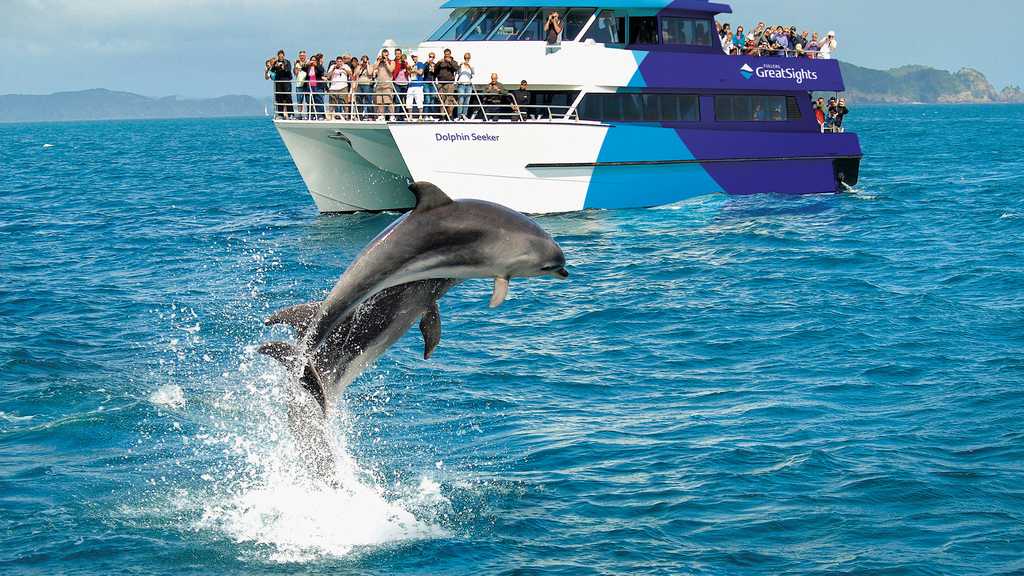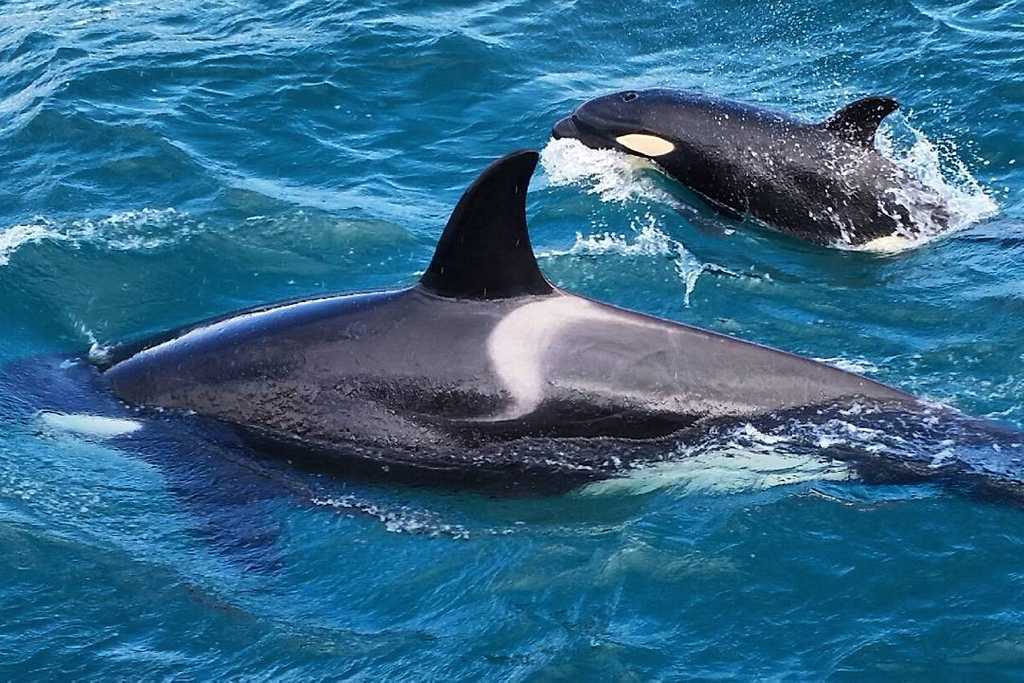See Dolphins and Whales in the Bay of Islands
If you’re visiting the Bay of Islands, you’ll want to get out on the water to explore the beautiful region and see wild dolphins and whales in their natural environment. These marine mammals are frequent visitors in the Bay, so there’s a good chance you’ll see either dolphins or whales during your cruise.
Here’s a quick guide to the kinds of dolphins and whales you might see in the Bay of Islands.
Dolphins in the Bay of Islands
Seeing dolphins in the Bay of Islands is an almost daily occurrence. Common and bottlenose dolphins are both frequently seen in the warm, sheltered waters of the Bay. Here’s how to tell them apart.
Bottlenose dolphins
These are larger than common dolphins, reaching up to 3.9m in length and weighing up to 650kg. Bottlenose dolphins have a relatively short beak and a hooked, prominent dorsal fin. They have dark or light grey backs, with paler underbellies, and live in pods of up to 60. It’s estimated that there are around 500 bottlenose dolphins in the Bay of Islands area.
Bottlenose dolphins in the Bay of Islands
Common dolphin
These smaller dolphins have tall dorsal fins and clear markings, with pale side patches. They reach around 2.4m in length and weigh up to 110kg. They form large schools, sometimes including up to several thousand individuals, and sometimes spend time with schools of pilot whales and other dolphin species. There are large numbers of common dolphins in the Bay of Islands region, but there are no precise population estimates.
Whales in the Bay of Islands
You might see any of several varieties of whale during a Bay of Islands cruise, including resident pods and those migrating across the Pacific Ocean.
Orca
We often see orca in the inner reaches of the Bay. They are also called killer whales, but orca are actually the largest members of the dolphin family. Orca can live in small family groups or pods of up to 30 individuals, although the pods we see in New Zealand are usually smaller.
Adult orca will eat everything from fish, sharks, rays and squid to birds and turtles. They also prey upon other marine mammals – so if we see orca in the Bay, you can usually bet the dolphins have travelled elsewhere for the day!
Orca and calf in the Bay of Islands
Bryde’s whales
Bryde’s (pronounced “broodus”) whales are also commonly seen in the Bay of Islands and Northland region. They have a bluish-grey body with white on the underside, broad short heads and two blowholes. Instead of teeth, Bryde’s whales have two rows of baleen plates, which filter and trap small fish. They usually travel alone or in pairs.
Long-finned pilot whales
These are also members of the dolphin family. You can recognise a pilot whale by its stocky body, rounded head with a slight beak. They are usually dark grey or black, and live in large groups. They are quite active and will frequently approach boats.
Humpback whales
Humpbacks are frequent visitors to our coastal waters in spring and autumn. They visit during their long migration between their feeding grounds near Antarctica and breeding areas further north. Humpback whales are easy to spot with their knobbly heads, short humped dorsal fins and long flippers. They are famous for their spectacular ‘breaching’ activity, leaping out of the water and slapping the water with their fins.
If you’d like to see dolphins and whales in the Bay of Islands, book a day tour from Auckland or visit dolphincruises.co.nz for more Bay of Islands cruise options.

